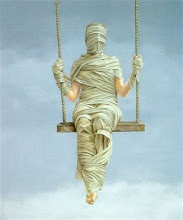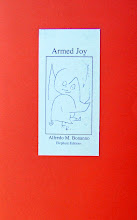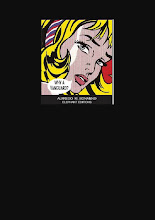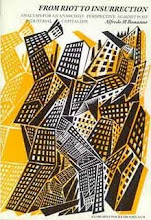The situation of struggle in Italy has become more schematic in recent times following the various blitz operations carried out by the anti-terrorist divisions of the carabinieri and police, some of which succeeded, and others fortunately failed.
One of the more clamorous ones that failed was the one against the comrades involved in the review ANARCHISMO, which began with the arrest of 21 comrades and finished with one sentence only for possession of explosives. The others, as is known, have all been released and the charges dropped due to complete lack of evidence against them. Only in the case of the comrade Alfredo Bonanno has the charge of propaganda against the State remained standing.
In the article published in the last issue of your paper there appeared to be some confusion concerning the area of autonomy and the anarchist movement in Italy, which we shall try to clarify to some extent in this short intervention.
At the end of 1972 there was a profound change within the revolutionary movement in Italy. The reaction to the provocation begun by the secret services, Ministry of the Interior and police forces with the piazza Fontana massacre and the anarchist witch-hunt at the end of 1969 pushed many comrades towards gaining an awareness of the problems of revolutionary organisation.
During this period Potere Operiao (Worker Power) gave their maximum contribution to the struggles and to the elaboration of an insurrectional theory. Then, followed in this by various other formations of post ’68 origins, they dissolved into the so-called movement, taking with them the contribution of their own experience and their militant actions.
It is the time in which Collettivo metropolitano is formed in Milan, which the first military formations of the Brigate rosse (Red Brigades) originated from.
Meanwhile revolutionary practice—we are around the years 1976-77, before the Convegna di Bologna (meeting against repression where over 100,000 comrades were present) in September 1977—expanded with big mass demonstrations and bloody battles with the police.
At the bologna meeting, where the revolutionary forces confronted each other with all their differences, but where the last moment of a historic period of the class struggle in Italy was marked, the area of autonomy were present in two different currents:
a) the current of autonomy as a movement, represented by the theories of comrades in Rome, which supported autonomy as the absence of whatever closed centralised structure.
b) current of autonomy as a party, represented by the theories of comrades in Padova and milan, who supported the formation of an “autonomy party” of a strictly leninist character.
Both of these currents could be defined as being of marxist-leninist observance, even though a break from the orthodox tradition has become evident, especially in recent times. Among these changes are: suspicion of dialectics, a reconsideration of the lumpenproletariat as a revolutionary element, a re-evaluation of the function of the minority organisation, including the clandestine one.
The various tendencies of the anarchist movement were also present at the Bologna meeting, more or less divided into two parts. On the one side there were the various expressions of educationism, pacifism, pluralism, individualism, etc; on the other, numerically inferior but more competitive, those who insisted on greater penetration into the reality of the struggles, territorial roots in the interventions made by comrades, and the organisation of armed clandestine struggle, revolutionary violence and insurrection.
Both tendencies shared a suspicion towards all the more or less marxist theses, and also agreed on the rejection of any ideological identification with the area of autonomy. For both these tendencies within the anarchist movement, the theory and practice of struggle continue to be those of the libertarian tradition.
The fact that on the operational level of the struggle anarchists and autonomists may sometimes have acted together should not lead one to believe that the substantial differences that divide these two parts of the Italian revolutionary movement have been overcome. Each has contributed within the limits of their own possibilities, remaining independant as organisational structures and, more obviously, as theoretical heritages.
We consider that this clarification is sufficient to show more clearly the relationship that exists today between anarchists and the area of autonomy in Italy.
Before closing, one last point must be made in our opinion. In the articlepublished by black flag on the blitz against ANARCHISMO reference was made to Alfredo bonanno’s book La Gioia armata, translating the title as The joy of arms. We think that this translation of the title is not only mistaken in the literal sense, but that it could also create a mistaken impression and distract the interest of comrades from a book which is far from being a hymn to violence but is a thoroughly examined critical inquiry into the problem of armed struggle. The correct translation which we are bringing to comrades’ notice is therefore armed joy.
Some comrades of “Anarchismo”
skip to main |
skip to sidebar

Some writings of Alfredo Maria Bonanno in English, or almost

Alfredo Bonanno was arrested on October 1st 2009 in Greece, accused of concourse in robbery. With him, anarchist comrade Christos Stratigopoulos.
Here are a few translations and part translations of a small portion of Alfredo's writing. This is a work in progress, many of the translations are as yet incomplete. Open links to find more of Alfredo's work.
Alfredo Bonnano Released
Nov. 22 Alfredo Bonnano was sentenced to 4 years imprisonment (which practically means that with the time served so far and the fact that he is over 70years old HE IS RELEASED
Christos Stratigopoulos (who took responsibility for the action)
was sentenced to 8 years and 9 months with the Greek law will probably be released at the end 2011
BY ANY MEANS NECESSARY
LINKS
click on any of these labels to read text
- "Community" sickness
- 1981 - Editorial
- A Critique of Syndicalist Methods
- A few notes on Sacco and Vanzetti
- A few notes on the revolutionary movement in Italy
- A little man in Singapore
- A million jobs
- A question of class
- Affinity
- After Marx autonomy
- Albania Laboratory of Subversion (Introduction)
- Anarchism and the national liberation struggle
- Anarchists and action
- AND WE WILL ALWAYS BE READY TO STORM THE HEAVENS AGAIN (Against amnesty)
- ANTI-INSTITUTIONAL MOVEMENT
- Are we modern?
- Armed Joy
- ARMED STRUGGLE. SOME REFLECTIONS.
- Autonomous base nuclei
- beyond syndicalism
- Beyond workerism
- But what is the imaginary?
- Class War
- Comiso - Organizational document of the self-managed leagues
- Considerations on illegality
- Dissonances (Introduction)
- Elephant Editions 1986
- Excluded and included
- Farewell to claiming
- Feral Revolution (Introduction)
- FICTITIOUS MOVEMENT AND REAL MOVEMENT
- For an Antiauthoritarian Insurrectionist International - Proposal for a debate
- From riot to insurrection
- From the centre to the periphery
- Good technology
- Guerilla Extraordinary
- Habits and idols
- Hegel
- I know who killed chief superintendent Luigi Calabresi
- Illegality
- Illness and capital
- Informal organisation
- Insurrection
- Internationalism
- Introduction to Sabate
- Introduction to Anarchism and Violence
- Introduction to Bratach Dubh English edition of Malatesta's Fra Contadini
- Introduction to Insurrectionalist Anarchism
- Introduction to Strange Victories
- Introduction to The Conquest of Bread
- Involuntary aspects of voluntary work
- Let's destroy work
- LET'S DESTROY WORK. New introduction
- Let's keep our feet on the ground please
- Lightening Conductors and Stand-ins - more shots of non-news
- Lightning Conductors and Stand-ins
- Lightning Conductors and Stand-ins (cont.)
- Locked up
- Looking forward to self-management
- Loss of language
- More on internationalism
- National Liberation Struggle
- nineteen years on
- No more crises
- Non-news about drugs
- Non-news about racism
- Ode to the Uniform
- On Feminism
- One's life on the line
- Order and chaos
- Otto Ruhle (Introductory Note)
- OUR ROLE IN THE PRESENT CONFLICT
- Palestine mon amour
- Pantagruel anarchist review
- Pinelli
- Prison and Prisoners’ Struggles - Introduction
- Propulsive Utopia
- Quality and the factory
- Restructuring Capital and the new democracy
- Revolution - Violence - Antiauthoritarianism
- REVOLUTIONARY VIOLENCE
- Science and the social revolution
- Self-management
- Severino Di Giovanni in Argentina 1923-1931 by Osvaldo Bayer
- Social banditry
- SOME NOTES -
- Space and Capital
- Stirner
- Stop the City? From information to attack
- Strategy and Methods
- Streamlined production
- The "end" of the crisis
- The aesthetics of anarchism
- The anarchist tension
- The area of autonomy and the anarchist movement in Italy
- The armed wing of science
- The Cruise missile base at Comiso can be prevented
- The ethical bank
- The insurrectional project
- THE LANGUAGE OF TECNICS -
- The logic of insurrection
- The moral split
- THE NECESSARY DESTRUCTION -
- The priority of practice
- The refusal of arms
- The revolutionary project
- The revolutionary struggle
- The significance of an insignificant event
- The struggle for self-managed social space
- The tyranny of weakness
- The whole and the part
- The young in a post industrial society
- Theory and action
- Towards anarchist antimilitarism
- TOWARDS THE GENERALISATION OF ARMED STRUGGLE
- TRANSFORMATION IN THE WORLD OF WORK AND SCHOOL -
- TRUTH -
- Unemployment in Italy - How come everything doesn't explode?
- Untitled
- Violence and non-violence
- What are anarchists
- What can we do with anti-fascism?
- Why a vanguard?
- Why Insurrection
- World domination in a few words











